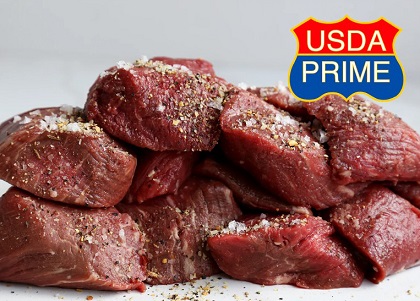Nikhil Prasad Fact checked by:Thailand Medical News Team May 25, 2024 11 months, 1 day, 19 hours, 57 minutes ago
H5N1 News: In a surprising turn of events, the USDA has reported the presence of the H5N1 virus in beef tissue, marking a significant moment in the ongoing battle against avian influenza. This development comes after weeks of intensive testing and scrutiny. The virus was detected in the muscle tissue of a culled cow, a finding that raises critical questions about food safety and the integrity of the meat industry.
 USDA Finds H5N1 In Beef Tissue
H5N1 Detected in Beef Tissue
USDA Finds H5N1 In Beef Tissue
H5N1 Detected in Beef Tissue
The USDA's Food Safety and Inspection Service (FSIS), in collaboration with the Animal and Plant Health Inspection Service (APHIS), has been conducting rigorous tests on beef tissue from 96 cull dairy cows. These cows were condemned at select FSIS-inspected facilities due to systemic diseases. On May 22, 2024, viral particles were discovered in tissue samples, including muscle, from one of these cows. It’s crucial to note that none of the meat from these condemned cows entered the food supply, underscoring the effectiveness of the USDA's safety protocols.
https://www.aphis.usda.gov/livestock-poultry-disease/avian/avian-influenza/hpai-detections/livestock/h5n1-beef-safety-studies
Despite this isolated case, the detection of H5N1 in beef tissue is alarming. It suggests a potential, albeit limited, threat of avian influenza infiltrating the beef industry. The finding has led to speculations about the extent of the virus's presence and whether influential private businesses have attempted to downplay or conceal this issue to protect their interests.
Ensuring Food Safety
The USDA has a robust system in place to ensure the safety of the meat supply. FSIS veterinarians are present at all federal livestock slaughter facilities, where they inspect each animal before slaughter. All cattle carcasses undergo a second inspection post-slaughter to confirm their suitability for human consumption. These inspections are designed to detect signs of illness, and in the case of the cow that tested positive for H5N1, the animal was identified and prevented from entering the food supply.
As a precaution, consumers are advised to handle raw meats properly and cook them to safe internal temperatures. Cooking meat to at least 145 degrees Fahrenheit (medium) or 160 degrees Fahrenheit (well done) effectively kills bacteria and viruses, including H5N1.
Ongoing Research and Updates
To maintain consumer confidence and verify the safety of the meat supply, the USDA's FSIS, APHIS, and Agricultural Research Service (ARS) are conducting several studies on beef safety in the context of avian influenza. The findings of some of these studies were already covered by previous
H5N1 News report.
Beef Muscle Sampling: FSIS collected muscle samples from cull dairy cows condemned at FSIS-inspected slaughter facilities. Out of 109 samples
collected, 96 have been tested so far. Except for the one cow that tested positive, no viral particles were found in the other 95 samples.
Retail Ground Beef Samples: Samples of ground beef were collected from retail outlets in states where dairy cattle herds had tested positive for H5N1. These samples were tested using PCR, and no viral particles were detected.
Ground Beef Cooking Study: ARS conducted a study where they inoculated ground beef patties with a high level of H5N1 virus and then cooked them to different temperatures. The results showed that cooking to the FSIS-recommended temperatures (145 and 160 degrees Fahrenheit) completely inactivated the virus. Even at 120 degrees Fahrenheit, a temperature below the recommended level, the virus was substantially inactivated.
Looking Ahead
The USDA's proactive measures and ongoing research are crucial in addressing the potential threat posed by H5N1. While the detection of the virus in beef tissue is concerning, the comprehensive inspection and testing protocols in place are designed to protect the public. The USDA continues to work diligently to trace the source of the infection and prevent any contaminated meat from entering the food supply.
Further updates will be provided as more testing is completed and new information becomes available. In the meantime, consumers can take comfort in the knowledge that the USDA is committed to ensuring the safety and integrity of the meat supply.
For the latest
H5N1 News, keep on logging to Thailand Medical News.
Read Also:
https://www.thailandmedical.news/news/breaking-h5n1-news-discovery-of-h5n1-virus-in-cat-food-in-south-korea-sparks-inquiry-about-virus-ability-to-withstand-extreme-conditions
